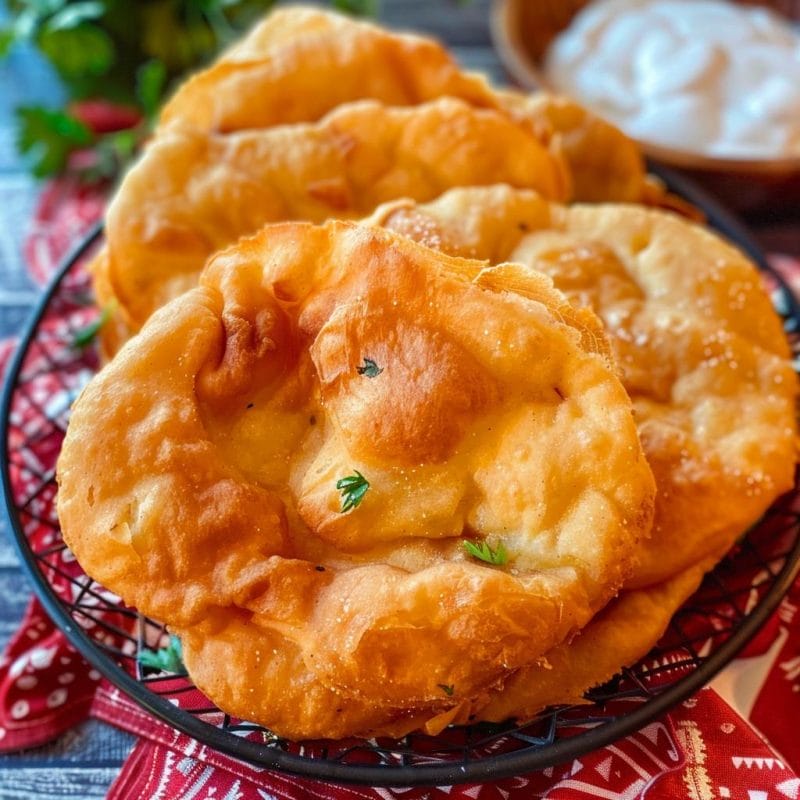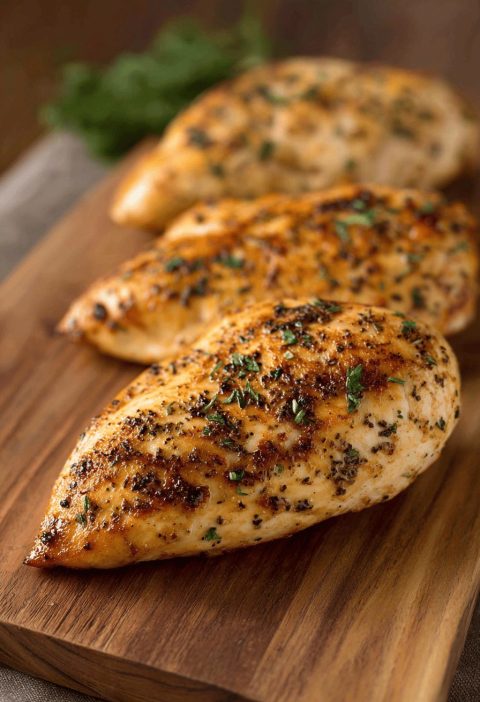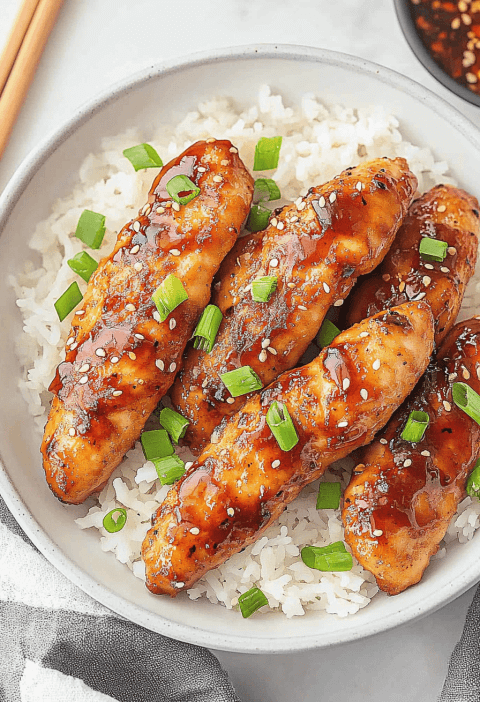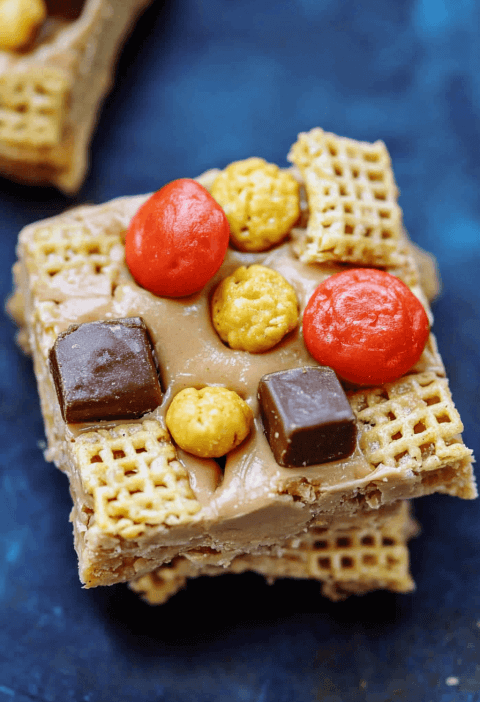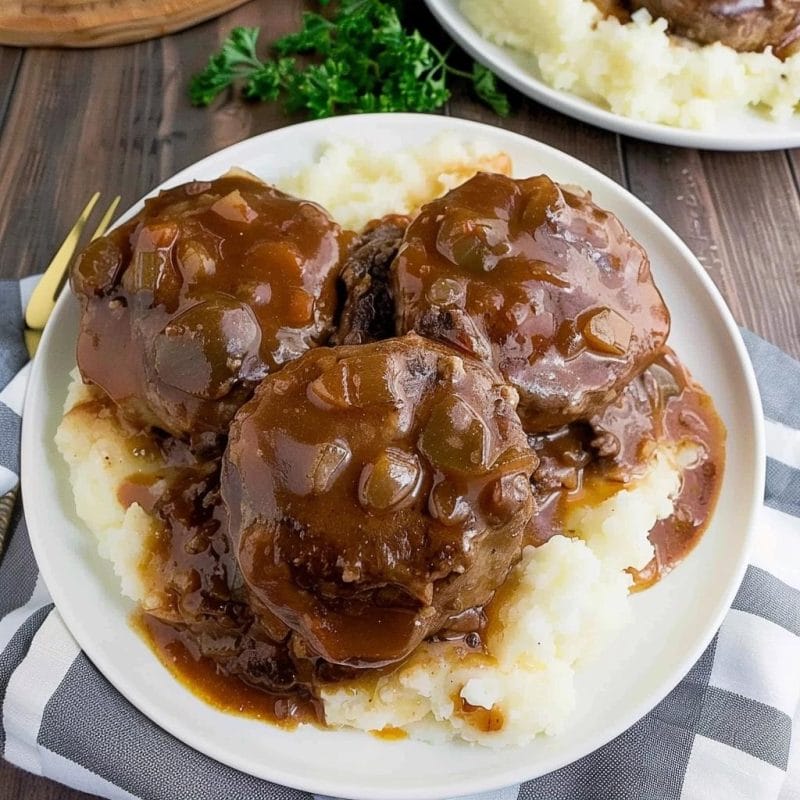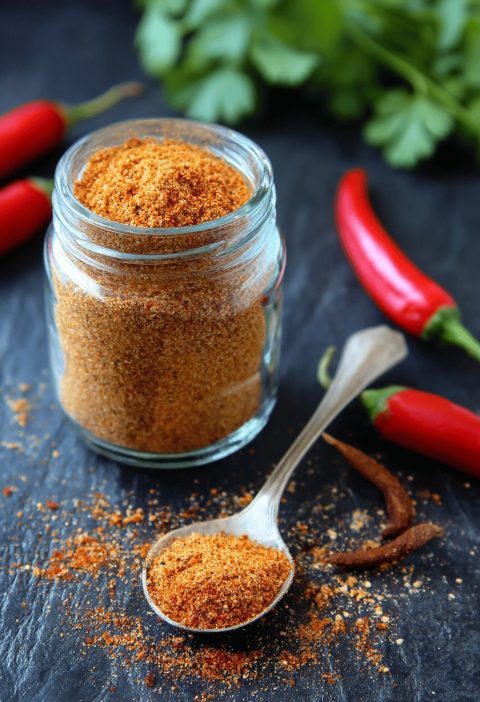Would you like to save this?
Creating frybread at home brings a sense of heritage and warmth to the kitchen. The simplicity of the ingredients—flour, baking powder, salt, and water—belies the richness of its history and the joy it brings when shared with family and friends. This traditional dish, often passed down through generations, connects us to our roots and reminds us of the cultural significance behind each bite. The process of kneading the dough, shaping it into rounds, and frying it to perfection is both meditative and rewarding. The soft, warm dough in your hands and the sizzle of frying bread evoke a sense of nostalgia and community.
Each piece of frybread emerges uniquely shaped, each one a testament to the hands that crafted it. The golden-brown exterior, crispy and slightly chewy, contrasts beautifully with the soft, pillowy interior. It’s a versatile dish that can be enjoyed in various ways—topped with savory ingredients like beans and cheese, or sweetened with honey and powdered sugar. Regardless of how it’s served, frybread brings people together, making every meal a celebration of culture and togetherness. The act of making and sharing frybread at home transforms a simple recipe into a cherished tradition, enriching both our palates and our hearts.
Ingredients:
3 cups all-purpose flour
1 tablespoon baking powder
1 teaspoon salt
1 cup warm water
Vegetable oil, for frying
The Role of Ingredients
All-Purpose Flour:
The foundation of the frybread, giving it structure and body. It provides the necessary gluten to hold the dough together and create that perfect texture.
Baking Powder: This leavening agent ensures the frybread puffs up slightly, creating a light and airy interior while maintaining a crisp exterior.
Salt: Enhances the flavor, balancing the simplicity of the other ingredients.
Warm Water: Brings the dough together, activating the gluten in the flour and ensuring the dough is pliable and easy to shape.
Vegetable Oil: Used for frying, it provides the necessary heat to cook the frybread evenly and gives it a golden, crispy finish.
Instructions:
1. Mix the Dry Ingredients:
In a large bowl, combine the flour, baking powder, and salt. Mixing the dry ingredients first ensures that the baking powder and salt are evenly distributed throughout the flour, resulting in a consistent dough.
2. Add Water:
Gradually add the water, mixing until a dough forms. The dough should be soft but not too sticky. You might need to adjust the water amount slightly. The key here is to add the water slowly, allowing the flour to absorb it gradually. This helps prevent the dough from becoming too sticky or too dry.
3. Knead the Dough:
On a floured surface, knead the dough gently for a few minutes until smooth. Kneading is essential as it develops the gluten in the flour, giving the frybread its characteristic chewiness and structure.
4. Shape the Dough:
Divide the dough into small balls, about the size of a golf ball. Flatten each ball into a round disk, about 1/4 inch thick. Use your fingers to gently stretch and shape the dough. The size and thickness can be adjusted based on personal preference, but uniformity ensures even frying.
5. Heat the Oil:
In a large skillet, heat about an inch of vegetable oil over medium-high heat until hot but not smoking. The oil should be sufficiently hot to fry the bread quickly without making it greasy. To test, you can drop a small piece of dough into the oil; if it sizzles and rises to the surface, the oil is ready.
6. Fry the Dough:
Carefully place each piece of dough into the hot oil. Fry until golden brown, about 1-2 minutes per side. Use tongs to flip the dough and ensure even cooking. Remove and drain on paper towels. Frying requires attention and care to ensure the dough cooks evenly and achieves that perfect golden brown color without burning.
7. Serve:
Enjoy the frybread warm, either plain, with honey and powdered sugar, or as a base for savory toppings like seasoned meat, beans, and cheese. Serving frybread warm is essential, as it is at its best when freshly fried and slightly crispy.
Variations and Substitutions
Sweet Frybread:
Drizzle with honey or syrup and sprinkle with powdered sugar or cinnamon sugar for a sweet treat. This version is a favorite among children and those with a sweet tooth, transforming the frybread into a delightful dessert.
Savory Frybread: Top with taco fillings like ground beef, lettuce, tomatoes, and cheese for a delicious Indian taco. This creates a hearty meal that combines the crispiness of the frybread with the rich flavors of the toppings.
Herbed Frybread: Add dried herbs like rosemary or thyme to the dough for a flavorful twist. This variation adds an aromatic element to the frybread, making it an excellent accompaniment to soups and stews.
Tips for Perfect Frybread
Temperature Control:
Maintaining the right oil temperature is crucial. Too hot, and the bread will burn; too cool, and it will absorb excess oil and become greasy.
Uniform Thickness: Ensuring the dough pieces are of uniform thickness helps them cook evenly.
Experiment with Toppings: Frybread is incredibly versatile. Don’t hesitate to experiment with different toppings and flavors to find your favorite combination.
Conclusion
Indian frybread is more than just a dish; it’s a connection to cultural heritage and a source of comfort. Its simplicity and versatility make it a beloved recipe in many households, bringing people together to enjoy its warm, crispy goodness. The process of making frybread is as enjoyable as eating it, offering a moment of mindfulness and creativity. Whether served as a dessert or a savory meal, frybread is sure to delight everyone at the table. The joy of crafting each unique piece and sharing it with loved ones transforms this humble recipe into a cherished tradition that enriches both our palates and our hearts. So, gather your ingredients, heat up the oil, and start creating your own batch of delicious frybread.

